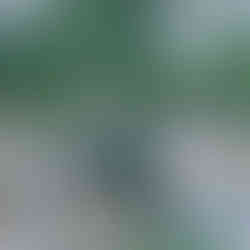Giverny, This Way

Art and its appreciation is an ever-evolving interest of mine, so when it comes to the work and life of a prolific artist like Claude Monet, I still feel a very novice level of understanding. He’s one of the omnipresent impressionist greats, of course, but I still feel like my knowledge is surface level. Like that of wandering through a museum and only reading the placards. Gift shop recognition. What you see is what you get.
This past summer I was lucky enough to be in one of my most fantasized cities in the world: Paris. While there for an entire week, I made only one excursion outside of the city. No, not to Versailles – I’ve been there once before already as a teen. I made my way by bus tour to the small town of Giverny.

Giverny for those of you unaware is about 90 minutes outside the city of Paris, population 509. It’s also where Monet’s home resides. That home. The home. The home of the lily pads. Those lily pads.
The day was overcast and slowly drizzling away on the old stones of the city, as the bus wound its way past the bustle of Paris. The countryside was beautiful and my view changed from grand old stone buildings to vibrantly soaked greens. The sounds of the tour guide coming through our individual headsets mixed with the rain on the windows and the hum of the other cars. Eventually, the bus arrived at Monet’s home, with the rain only gaining strength.
As the great travel guru Rick Steves puts it, the home of Monet is “like his paintings — brightly colored patches that are messy but balanced. Flowers were his brushstrokes, a bit untamed and slapdash, but part of a carefully composed design.”
Steves goes on to say:
[...] In 1883, middle-aged Claude Monet, his wife Alice, and their eight children from two families settled into a farmhouse here, west of Paris. Monet, at that point a famous artist and happiest at home, would spend 40 years in Giverny, traveling less with each passing year. He built a pastoral paradise complete with a Japanese garden and a pond full of floating lilies.
In 1890, Monet started renovating his garden, inspired by tranquil scenes from the Japanese prints he collected. He diverted a river to form a pond, planted willows and bamboo on the shores, filled the pond with water lilies, then crossed it with a wooden footbridge.
The home and garden, like his paintings, took time, and like his art evolved and changed as he grew older.
With the voice of my tour guide in my ear and my raincoat hood pulled up, I slowly snaked my way through the first garden. The vivid colors of the flowers coming through the dreariness of the day. The garden itself seemed largely empty of others outside of my own group. The rain had a bright side to it, most of my photos of the day have no one in them.
As it began to rain harder, we made our way into the home itself – that, it turns out, was where all the other visitors were. Going through the home felt like being on the Disney ride “It’s a Small World.” Someone always in front of or behind me as the line slowly moved it’s way through the main hall, up the stairs, through the bedrooms, and eventually back down through the heavily-tiled kitchen. What struck me, and something that speaks to my own lack of knowledge on Monet was how much Japanese art filled the home. Monet, it turns out, was an avid collector of Japanese style art. So while his home features many of his own works, I’d say most pieces hanging on the old walls featured other artists he had collected.
Rain or not, we were on a time schedule and the guided tour was over. We were free to wander and make our way to the ponds on our own. After emerging from a tunnel under the road, I was greeted with massive amounts of bamboo framing the property. According to Giverny.org,
In 1893, ten years after his arrival at Giverny, Monet bought the piece of land neighbouring his property on the other side of the railway. It was crossed by a small brook, the Ru, which is a diversion of the Epte, a tributary of the Seine River. With the support of the prefecture, Monet had the first small pond dug; even though his peasant neighbours were opposed. They were afraid that his strange plants would poison the water.
Wandering through the flowers, learning about how much Monet not only painted beautiful gardens but carefully cared for his own, reminded me of wandering nurseries as a kid. My father was a landscaper when I was younger, and would sometimes take me to pick up plants for his work. So many varieties all in one place. So many colors and fresh smells. Art and nature mingling.
I was just one among an average of 500,000 that visit Monet’s home each year during the seven months it’s open. After the gift shop – there’s always a gift shop – I wandered for a bit through the small town. The wet old buildings were almost as beautiful to me as Monet’s art. I ended my time in Giverny over a cup of coffee and a croissant from a nearby cafe. Shivering, wet, and happy.
Stay Backwords,
Phillip Trey



















































